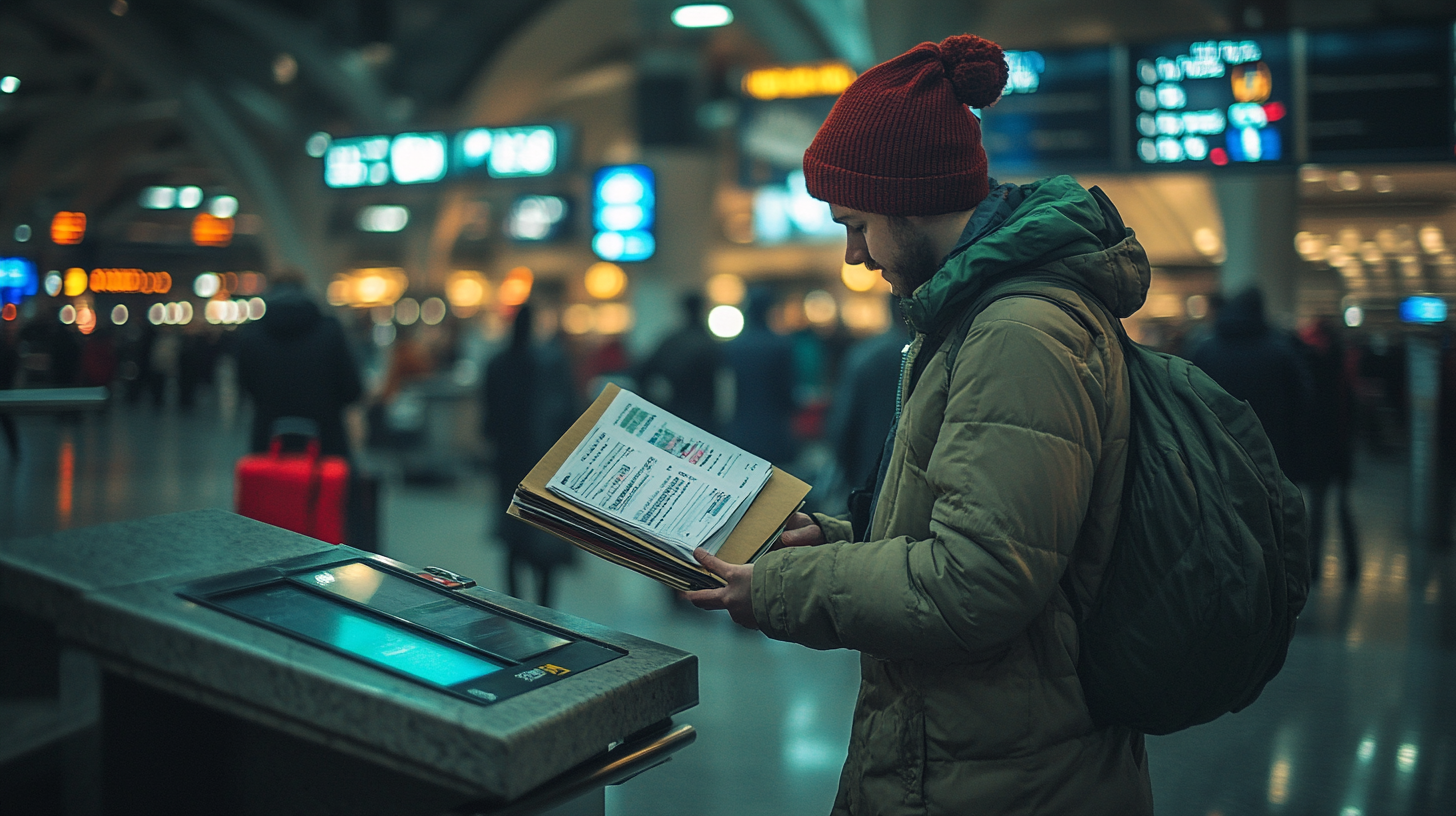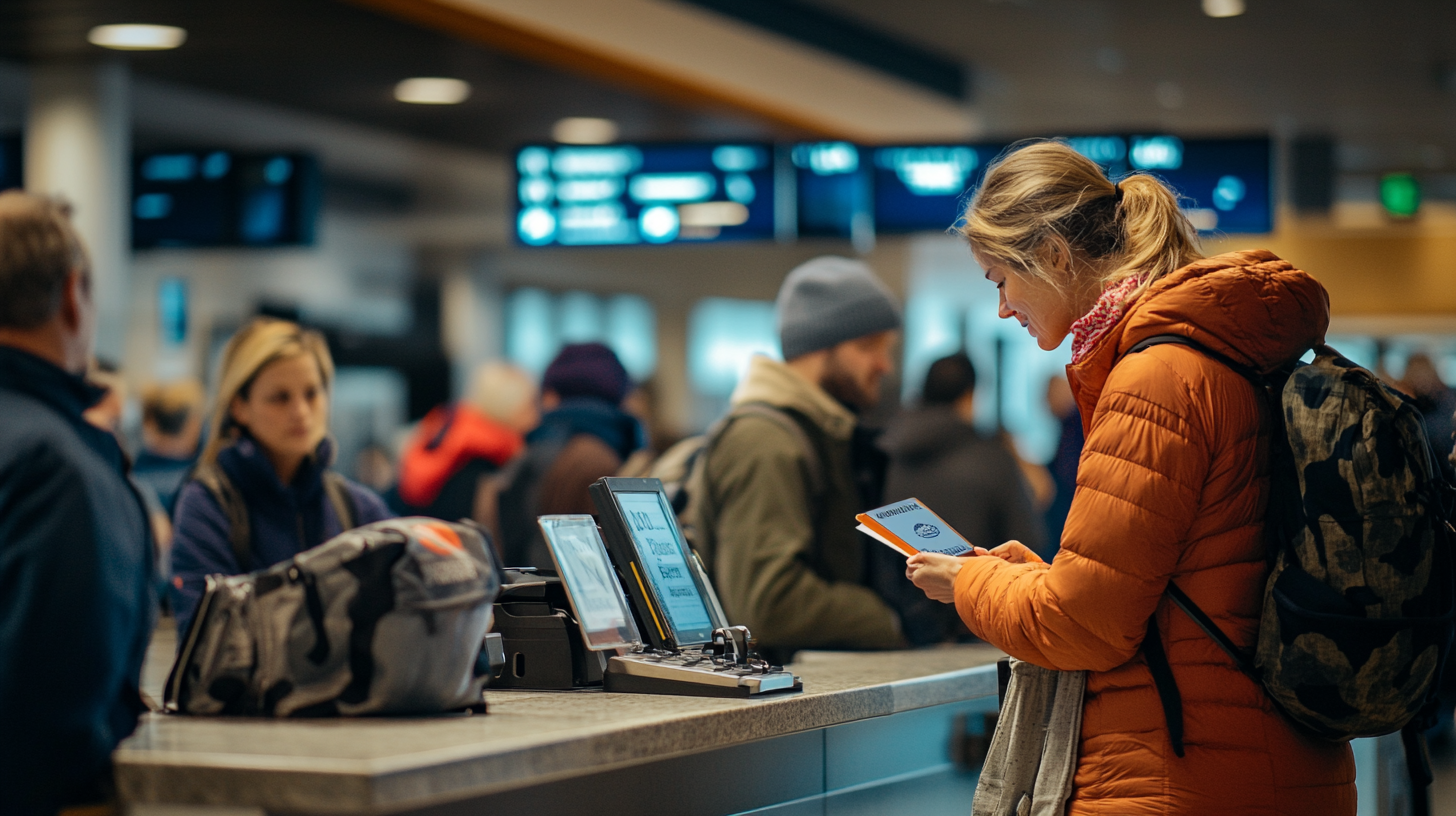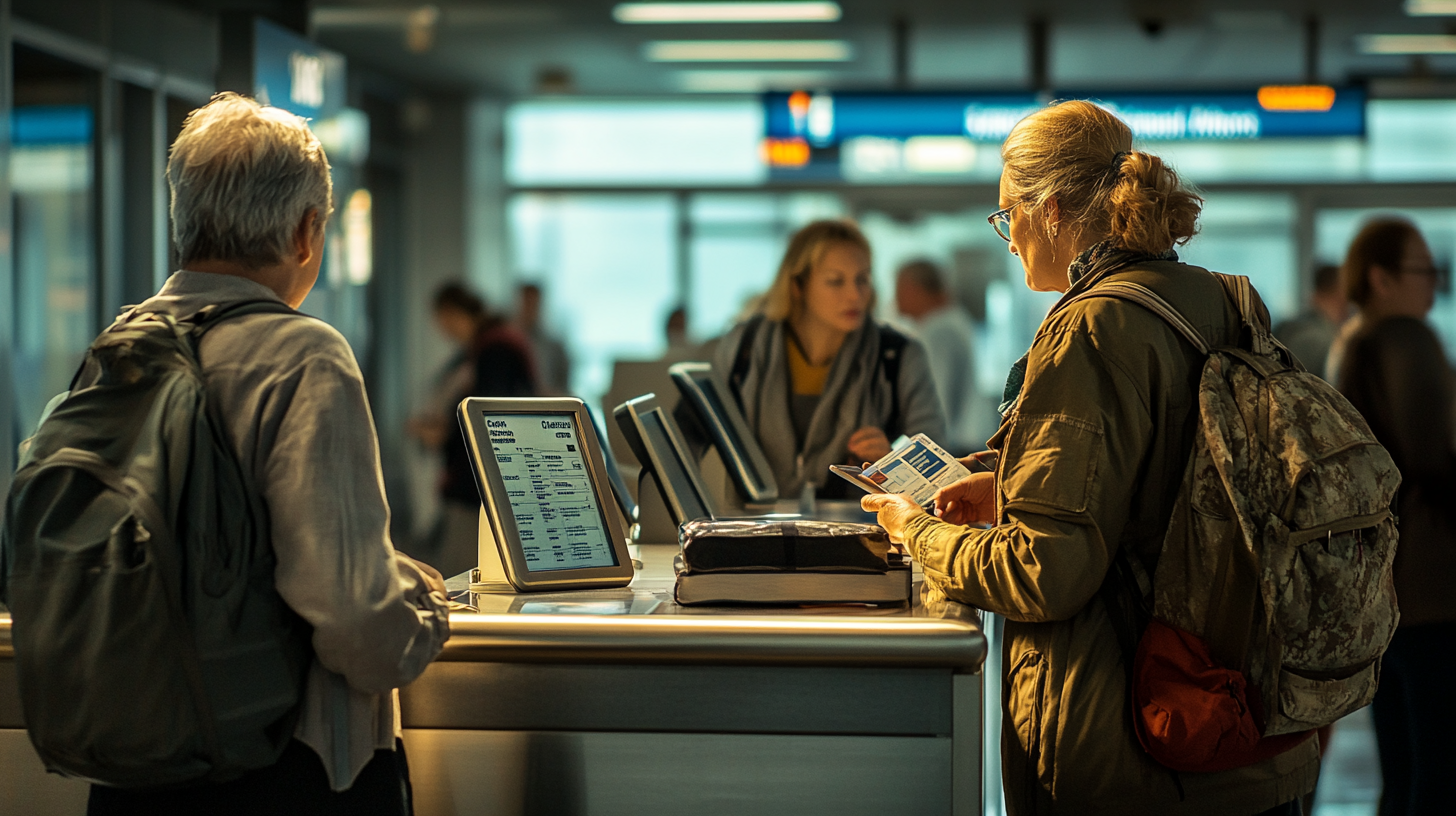Can You Get a Gate Pass at the Airport?

Traveling is more than just moving from one place to another; it’s an experience filled with excitement, anticipation, and sometimes a touch of anxiety. Whether it’s a young child embarking on their first solo adventure, an elderly parent navigating through a bustling terminal, or a loved one with special needs requiring extra assistance, being there to support them can make all the difference. In these moments, the ability to accompany someone beyond the security checkpoint becomes invaluable. But in today’s world of heightened airport security, can you actually get a gate pass at the airport? What does the process involve, and how can you ensure you’re prepared?
The Evolution of Airport Security and Gate Passes
Airport security has seen a dramatic evolution over the past few decades. Prior to the tragic events of September 11, 2001, airports were more accessible, and it was commonplace for family and friends to accompany travelers right up to the departure gate. Terminals were filled with heartfelt goodbyes and joyous reunions, adding a personal touch to air travel.
However, the post-9/11 era ushered in a new focus on safety and security. The establishment of the Transportation Security Administration (TSA) led to stringent measures designed to prevent threats and ensure the safety of passengers and crew. Access to secure areas became restricted to ticketed passengers only, fundamentally changing the airport experience.
Recognizing the importance of allowing assistance for those who truly need it, airports and airlines adapted by introducing gate passes. These passes offer limited access to non-ticketed individuals under specific circumstances, balancing the imperative of security with the genuine needs of travelers. For a detailed look at how airport security has evolved and its impact on gate pass accessibility, see The History of Airport Security and Gate Passes .
What Is a Gate Pass?

A gate pass is a special authorization issued by an airline that allows a non-ticketed person to access the secure areas of an airport terminal, typically to accompany or meet a passenger who requires assistance. This pass is not freely available to everyone but is reserved for situations where accompaniment is deemed necessary. Key scenarios include:
- Unaccompanied minors: Children traveling alone may feel overwhelmed by the airport environment. Having a parent or guardian guide them through check-in, security, and to the gate provides reassurance and ensures they are safely handed over to airline staff.
- Elderly adults: Senior travelers might face challenges with mobility, hearing, or vision. Assistance from a family member can help them navigate the terminal, manage their belongings, and communicate with airline personnel.
- Individuals with disabilities: Passengers with physical or cognitive disabilities may require specialized support. A companion familiar with their needs can provide essential assistance during the airport journey.
- Military personnel: Families often wish to spend as much time as possible with their service members before deployment. Gate passes allow loved ones to accompany them right up to departure or greet them upon return.
It’s important to understand that gate passes are intended for these specific support roles. They are not a means for gaining general access to airport facilities or for circumventing standard security protocols.
How to Obtain a Gate Pass

Securing a gate pass requires careful planning and adherence to airline and TSA procedures. Here’s a step-by-step guide to help you navigate the process:
Contact the Airline

Since gate passes are issued by airlines, your first step should be to reach out to the specific carrier your loved one is traveling with. Contact the airline’s customer service ahead of the travel date to inquire about their gate pass policies and any specific requirements they may have. Policies can vary between airlines, so obtaining accurate information is crucial. For a comprehensive overview of different airline policies, consult Airline-Specific Gate Pass Guidelines for Assisting Passengers .
Provide Necessary Documentation

Airlines will typically require you to present a valid government-issued photo ID, such as a driver’s license or passport. Be prepared to provide detailed information about the passenger’s flight, including:
- Passenger’s full name
- Flight number
- Departure date and time
- Booking confirmation or record locator
Some airlines may ask for additional documentation, especially when assisting unaccompanied minors or passengers with special needs. Having all necessary documents readily available can expedite the process.
Visit the Ticket Counter

On the day of travel, arrive at the airport well in advance—at least two hours before the scheduled departure is recommended. Proceed to the airline’s ticket counter or customer service desk to request the gate pass. The airline representative will verify your identification and the passenger’s flight details before issuing the pass.
Clear Security

With the gate pass and your ID in hand, you’ll need to go through the standard TSA security screening. This process is identical to that of ticketed passengers. Be prepared to remove shoes, belts, and jackets, and ensure that you are not carrying any prohibited items. Familiarize yourself with TSA regulations ahead of time to minimize delays. For more information on navigating TSA procedures with a gate pass, refer to TSA Guidelines for Non-Ticketed Passengers with Gate Passes .
Airline and Airport Policies

Understanding the policies of both the airline and the airport is essential, as they can significantly impact your ability to obtain and use a gate pass. Several factors influence these policies:
- Airline-specific regulations: Each airline has its own set of rules regarding who can receive a gate pass and under what circumstances. Some may have age restrictions or require advanced notice.
- Airport security protocols: Security measures can vary by airport and may change based on threat levels or special events. Some airports might have stricter controls that limit gate pass issuance.
- Time limitations: Gate passes are generally valid only for a specific time frame on the day of travel. Be aware of any timing restrictions to avoid access issues.
- Potential fees: While gate passes are typically provided free of charge, it’s wise to confirm this with the airline to avoid unexpected expenses.
Due to these variables, it’s advisable to check with both the airline and the airport prior to the travel date. This ensures you have the most current information and can make any necessary arrangements. For insights into navigating varying policies, see Navigating Airline and Airport Gate Pass Policies Effectively .
Airport Visitor Pass Programs

In addition to gate passes for assisting passengers, some airports have introduced visitor pass programs. These initiatives allow non-ticketed individuals to access post-security areas for purposes such as shopping, dining, or spending extra time with loved ones. These programs are part of a broader effort to enhance the airport experience and make better use of terminal facilities.
Participating Airports

Several airports currently offer visitor pass programs, including:
- Seattle-Tacoma International Airport
- Tampa International Airport
- Detroit Metropolitan Wayne County Airport
- New Orleans Louis Armstrong International Airport
- Orlando International Airport
- Philadelphia International Airport
- John Wayne Airport in California
- Flint Bishop International Airport
- Pittsburgh International Airport
Program Features

These programs generally allow non-ticketed guests to:
- Shop and dine in airport terminals beyond security
- Explore airport amenities such as lounges, spas, or observation decks
- Accompany or meet loved ones at the gate
Enrollment Process

Accessing a visitor pass program typically involves:
- Online Registration: Prospective visitors may need to apply online through the airport’s official website, often at least 24 hours in advance.
- Security Checks: Participants are subject to standard TSA security screening and may undergo additional background checks.
- Valid Identification: A government-issued photo ID is required upon arrival at the airport.
It’s important to note that these programs can have limited availability, capacity restrictions, or specific operating hours. They may also be suspended or modified due to changes in security protocols or health guidelines. For a detailed guide on airport visitor pass programs, visit Airport Visitor Pass Programs: How to Access Secure Areas Without a Ticket .
Military Families and Gate Passes

Military families often face unique circumstances that warrant special consideration. Airlines frequently provide gate passes to immediate family members of service members who are departing for or returning from deployment. This allows families to maximize the time they have together during emotionally significant moments.
The process for obtaining a gate pass in these situations is similar to the standard procedure but may require additional documentation, such as military orders or identification. Some airlines may have dedicated programs or support staff to assist military families. Checking with the airline ahead of time can help ensure all requirements are met. For more information, see Assisting Military Families with Airport Gate Pass Access .
Restrictions and Limitations

While gate passes provide extended access within the airport, they come with certain restrictions to uphold security protocols:
- Meeting Arriving Passengers: Generally, gate passes are intended for accompanying departing passengers. Access to meet arriving passengers at the gate is often restricted due to security procedures in place for international arrivals and customs processing.
- Security Levels: During periods of heightened security alerts or special events, airports and airlines may limit or suspend the issuance of gate passes entirely.
- Purpose Limitation: Gate passes should be used solely for the purpose they were issued. Wandering to other gates, terminals, or engaging in activities unrelated to assisting the passenger may be prohibited.
Violating the terms of a gate pass can result in revocation of access and potential legal consequences. Always adhere to the guidelines provided by the airline and airport authorities.
Tips for Obtaining a Gate Pass

To enhance your chances of successfully obtaining and using a gate pass, consider the following recommendations:
Plan Ahead

Initiate contact with the airline as early as possible. Some airlines may require advance notice, especially for unaccompanied minors or passengers with special needs. Early planning allows you to gather all necessary information and documentation.
Arrive Early

Allocate extra time on the day of travel. Airports can be unpredictable, and factors such as long lines at the ticket counter or security checkpoints can cause delays. Arriving at least two to three hours before the flight ensures you can complete all procedures without rushing.
Prepare Necessary Documents

Organize all required identification and travel documents in advance. Having everything readily accessible can expedite the gate pass issuance and reduce stress. Consider carrying copies of any relevant medical documents if assisting a passenger with health concerns.
Check for Fees

While most airlines do not charge for gate passes, policies can vary. Confirming this detail ahead of time prevents unexpected expenses and allows you to budget accordingly.
Stay Informed
Monitor any communications from the airline or airport leading up to the travel date. Changes in security levels, health advisories, or airline policies can impact gate pass availability. Staying informed enables you to adjust plans if necessary.
For additional strategies on successfully obtaining a gate pass, refer to Effective Strategies for Accessing Airport Gate Passes .
Final Thoughts
Acquiring a gate pass at the airport is a feasible option for those who need to accompany or assist specific passengers. Understanding the purpose of gate passes, familiarizing yourself with airline and airport policies, and following the proper procedures are key to navigating the process smoothly. Whether you’re guiding an unaccompanied minor, supporting an elderly traveler, or embracing a loved one in the military, a gate pass can provide invaluable access during important moments.
By meticulously planning, adhering to guidelines, and staying informed, you can enhance the travel experience for both yourself and your loved one, all while respecting the security measures in place to keep everyone safe. Follow us back to Seat 5A for more insights and travel tips.






